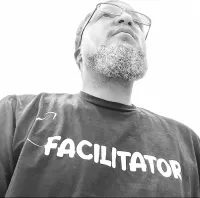Your Success, Our Priority
Browse our articles below
Make sure to request our FREE Role Player Guide to Recruiting
Click the more stories button for additional articles

The Hidden Cycle Behind Outrage, Attention, and Profit
The Hidden Cycle Behind Outrage, Attention, and Profit
Social feeds flood with trending clashes, viral outrage, draft drama, and sudden controversies, then pivot overnight to the next headline-grabbing event. Whether it is the uproar around NCAA transfers, debates over tariffs, or the emotional swings tied to the WNBA, NBA, and NFL drafts, a pattern emerges. Frustration and confusion are not just common reactions, they seem woven into a process deliberately designed to stir emotions and keep attention locked in place.
Beneath the surface of these events runs a coordinated cycle. Each segment from sports drafts to trade policy debates to influencer scandals, pulls viewers into a swirl of reaction and speculation. The cycle does not just reflect public interest; it shapes it, driving engagement and profit at every turn. Understanding the architecture of these moments reveals a deeper strategy at play, one that corrals outrage and confusion to maximize influence and revenue.
The Mechanics of Emotional Cycles in Media Events
Every major event that explodes on social media or news networks tends to follow a strikingly familiar rhythm. The pattern starts with a trigger: a controversial post, a trade rumor, a policy change, or a dramatic moment from a televised draft. Instantly, platforms amplify these triggers, fueling widespread debate and speculation. Emotional responses such as anger, excitement, and confusion spike as users respond, share, and comment, driving stories into trending status within hours.
This dynamic is not accidental. Content algorithms elevate posts receiving strong engagement, especially those stirring intense reactions. The more emotional the conversation, the more likely it is to rise to the top. Media producers and influencers, aware of this mechanism, often frame events or commentary to maximize reaction. In turn, audiences are nudged into cycles of frustration or excitement, not always aware that their collective attention is being steered for maximum profitability.
Viewers and participants rarely question why stories shift so quickly or why certain issues seem to linger while others vanish. The cycle’s reliability lies in its invisibility, harnessing attention at scale and driving repeated patterns of engagement every time a new controversy or event surfaces.
Social Media Crashouts and Viral Outrage
Crash outs, those sudden moments when a person or topic dominates all conversation, are crafted to feel spontaneous, but often have deeper origins. Platforms and content creators frequently collaborate, whether openly or not, to launch certain controversies at precise times. Influencers might promote outrage over a perceived snub in an NBA draft or amplify controversy in the wake of a WNBA trade, generating waves of public reaction.
Once news breaks, algorithms do the rest. Content that sparks heated debate is pushed to larger audiences. Memes, hashtags, and video clips help the cycle reach across platforms, pulling in those who might not normally care. The effect can be overwhelming: within hours, timelines fill with hot takes, analysis, and emotional venting. The audience is kept invested, compelled to return for updates or chime in with their own opinions.
What gets lost in this surge is often the original event or its factual basis. Outrage takes center stage because it rewards everyone involved and the platforms thrive on clicks and shares, content creators grow their base, and viewers feel part of something big.
The result is a repeatable blueprint for keeping attention fixed and emotions high. Crashouts reset the conversation, ensuring the cycle never truly ends, just shifts to its next target.
Tariffs and Trade Policy as Emotional Triggers
Tariffs and trade debates tap into national anxieties, offering a different but equally potent form of emotional manipulation. Announcements about tariffs often surface amid other dramatic news cycles, intentionally or otherwise, capturing the public’s attention. The conversation quickly polarizes, with experts, pundits, and politicians weighing in, each stirring a new layer of reaction.
Coverage rarely stays focused on nuanced policy details. Instead, headlines latch onto whatever aspect is likely to provoke strongest response such as job loss fears, economic threats, or national pride. These stories dominate trends for days, only to fade as a new controversy grabs the audience’s eye. During their peak, these cycles often drown out more thoughtful discourse, encouraging knee-jerk reactions instead.
Audiences get caught in the waves, moving seamlessly from one policy outrage to another. The churn feels organic, but it follows the same rules that drive sports drafts and influencer scandals, keeping engagement and profit center stage.
How Sports Drafts Drive Attention and Profit
Events like the WNBA Draft, NBA Draft, and NFL Draft are not just about roster additions. These drafts are major content engines, producing weeks’ worth of hype, speculation, and drama. Coverage extends well beyond the sports pages. Every pick, snub, and rumor is dissected, debated, and broadcast across social channels, talk shows, and podcasts.
The emotional stakes are intentional. Teams hint at surprise selections, analysts predict shocking moves, and fans invest deeply in the outcome. This orchestrated buildup drives engagement for sponsors, advertisers, and media outlets. By framing each draft as unpredictable and charged with potential for outrage, stakeholders ensure that eyes remain glued to screens through every round.
For fans, draft day becomes more than a sporting event. It is a shared experience of anticipation, excitement, and, frequently, collective disagreement or frustration. The collective emotional energy sustains viewership and reinforces the cycle’s profitability.
The NCAA Transfer Portal and Perpetual Speculation
The NCAA Transfer Portal has added a whole new layer to the cycle, introducing year-round speculation and debate into college sports. Instead of waiting for official drafts, audiences now track player movement daily. Every new entry or exit sparks analysis, hot takes, and conflicting emotions among fans and pundits.
Media outlets and social accounts track these moves obsessively, turning each transfer into a miniature event. This stream of movement ensures a constant supply of talking points, fresh controversy, and renewed frustration. Audiences struggle to keep up, but that is part of the dynamic, staying glued to updates, never quite satisfied, always ready for the next twist.
By turning transfers into public spectacle, the system keeps attention engaged year-round. This intensity has not only changed how college sports are covered but has also strengthened the attention cycle’s grip on both fans and institutions.
Who Benefits from the Cycle of Frustration and Outrage
Whenever a coordinated cycle pulls in public attention, the main beneficiaries are those who control the flow of information and monetize engagement. Social media platforms see increases in ad revenue thanks to higher user activity. Media companies enjoy spikes in traffic that translate to greater influence and profit margins. Influencers and pundits riding these cycles also see sharp boosts in personal branding and audience size.
Sports leagues and organizers profit as well. The drama around drafts and transfers keeps fans emotionally invested and willing to spend on merchandise, tickets, and streaming subscriptions. Even policymakers and politicians find opportunity in pushing controversial trade or tariff positions, leveraging the cycle to build support or distract from other issues.
In every case, the audience’s emotional investment translates to real economic gains for those driving the cycle. The structure ensures that frustration and outrage are not byproducts but essential components of an efficient business model.
Recognizing Patterns in a Manufactured Narrative
Spotting the recurring cycles in these events can help shift perspective. When identical structures keep resurfacing, outrage, emotional engagement, rapid topic shifts as it signals a manufactured rhythm. Recognizing these patterns makes it easier to step back and evaluate whether a reaction is genuinely warranted or simply engineered.
This recognition does not diminish real problems at the heart of many stories. Instead, it allows individuals to approach them from a place of awareness, choosing where to invest attention rather than following the crowd’s emotional lead. Awareness disrupts the control that coordinated cycles hold over narrative and engagement.
Learning to identify these patterns helps audiences reclaim some control, filtering emotional triggers and recognizing who stands to gain from sustained controversy and confusion.
Tools for Breaking Out of the Cycle
Breaking free from the cycle of orchestrated frustration and outrage requires deliberate action. Individuals can adopt strategies to disrupt habitual engagement and regain focus. Some practical approaches include:
Consuming information from diverse sources to avoid echo chambers
Pausing before reacting emotionally to trending topics
Prioritizing content that adds depth or context, not just sensational headlines
Setting boundaries on time spent scrolling through heated discussions
Supporting media outlets and creators that encourage thoughtful analysis
Bringing intentionality to content consumption weakens the profitability of the cycle, making it less effective as a tool for controlling narrative and attention.
As more people adopt these habits, the power of coordinated cycles can diminish, opening space for genuine engagement and dialogue. The first step is recognizing that the cycle exists and that it does not have to dictate where energy and focus go next.
Why Pattern Recognition Matters Going Forward
Staying attuned to these cycles is not just self-protection; it is a collective exercise in shaping public conversation. When more individuals notice the coordinated nature of outrage and attention, it becomes harder for these cycles to maintain their grip. The ability to recognize when emotions are being steered, rather than simply felt, opens up the chance to choose new responses.
Platforms and content producers rely on predictability. Surprising them by breaking the cycle, disengaging, or demanding more nuanced approaches removes some of their control. While these cycles are unlikely to disappear, their influence can shrink in the face of conscious, informed audiences.
Staying curious about these patterns encourages a new kind of media literacy, one that values understanding over reaction and perspective over impulse.
Turning Awareness into Agency
Awareness does not automatically bring solutions, but it offers power. By seeing the pattern, audiences can reject being passive participants in cycles designed for profit and manipulation. Each individual, with every decision to pause, question, or seek deeper context, contributes to changing the outcome of the cycle. This shift from being steered to steering, if it spreads, could change not only the way events are consumed but also the way narratives are built and sustained.

Coach Anthony
Founder of Facilitate The Process | Athletic Recruiting Strategist | Sports Marketing Pro Anthony Washington is the founder of Facilitate The Process, a tech-driven recruiting platform that empowers student-athletes, coaches, and parents to navigate college recruiting with confidence. With over 20 years of experience in sports management, marketing, and athlete development, Anthony brings a unique blend of strategy, innovation, and mentorship to the world of college athletics. When he's not helping athletes get noticed, he's building systems to make the recruiting process easier, faster, and more impactful for everyone involved.
Resources & Community
🎯
Follow Facilitate The Process on Facebook
https://www.facebook.com/facilitatetheprocess/
🌐
Join Our Recruiting Community
🔗
Get Started Today

